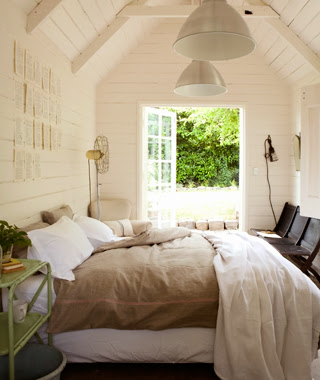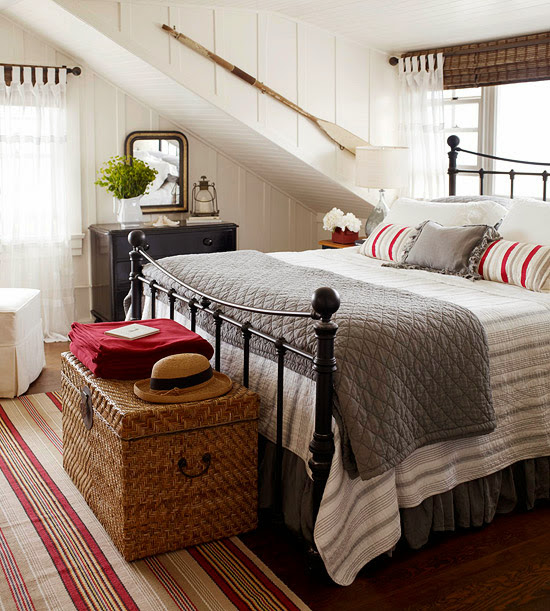You may have noticed the floor beneath the TV Console I blogged about in my previous post. I tried to hide as much of it as I could, but it couldn't help sneaking into the photo. Floors have a way of doing that.
I bought a 13'x15' piece of neutral comfy carpet and had it bound at a total cost of about $200 to cover most of this ugly floor in my family room while I await my dream hardwood floors. Meanwhile, I try to avoid photographing them.
I feel like my floors are the elephant in the room no one wants to acknowledge, but there they are. So here's the background on the faux brick vinyl flooring that
covers my kitchen, hallway, and family room.
I wish I could say someone else was responsible for the floors pictured in these grainy old photos, but I can't hide.
It was me.
In my defense, twenty-five years ago, when these floors were installed, vinyl sheet flooring was the "in" thing. I saw this pattern in another old house in my historic neighborhood and fell in love with it. I had two little children, and what is now our family room, was then their play room, connected to the kitchen by a long hallway. (Our house is called a shotgun floorplan because you can stand at the front door and shoot a gun through the whole house to the
back door, though I haven't actually tried it.)
Thinking that my darling little girls would scratch hypothetical hardwood floors with sand from the sandbox, spill paint on them from their easels, and stain them with grape juice from their sippy cups, I chose this vinyl as something worry free that I wouldn't have to keep a constant careful eye on.
Plus, we were young and house poor, remodeling a kitchen and bathroom in the old part of the house and building on a huge new addition. We put our money into square feet and didn't have much left for the finishes.
In spite of that, we did get the best we could afford, and this floor was the highest-end Tarkett vinyl floor available. It came with a lifetime warranty, so how could we go wrong?
This I can attest to: our Tarkett floor earned its lifetime warranty. It is hard as rocks and never showed a scratch. I have used paint removers and even sand paper on it, and nothing ever damages it. I was very happy with it for about ten years until the trend wore out, I got tired of the pattern, and I wanted something I didn't feel embarrassed by.
Rule #1: If you can afford to remodel regularly, go ahead and get the trendy finishes that are "in" now, and just change them when you grow tired of them, even if they haven't worn out. I couldn't afford to change my trendy vinyl and have had to live with it for ten years past the trend's time. Ugh! The best advice I've seen on avoiding the issue of trendy finishes was from Nicole Curtis on the HGTV show, Rehab Addict. She advises never put a finish into your remodel that you wouldn't have found available the year your house was built. That way, it will always look authentic and never trendy. There was no sheet vinyl flooring available in 1910 when my home was built, and I wish I would have bit the bullet and borrowed a little more money at the time for hardwood. I could have just refinished the wood floors when the girls were grown and done with the sandbox.

Like my hand-me-down Windsor chairs, the original hardwood Maple floors in the old part of our house will never go out of style in our period home, and I've never grown tired of them.
Rule #2: If you want your finishes to last a lifetime, make sure the installation will also. While the Tarkett Vinyl itself earned its lifetime warranty, the entire floor installation did not. Don't mistake the lifetime warranty of your finish with how long the entire job will last. The surface of our vinyl floor is almost still like new, but the installation gave out about the same time the solid vinyl trend did. The seams between the big sheets came apart and curled, and we literally are holding them together now with clear packing tape. No glue we've tried will hold the curling edges down.
We found out that many glued-on floor installations, like vinyl, linoleum tiles, and laminate rarely come with much of a warranty. And if it does, this installation warranty, like the floor material itself, is only as good as the company behind it. In our case, the company we used made an excuse about the glue and wouldn't stand behind the installation. I doubt they get a lot of repeat business. Meanwhile, the solid wood floors that were nailed down in the old part of the house are 110 years old and still going strong. So, don't just think about the finish, think about the installation, too.
This morning, when I looked back at my blog post from yesterday and winced, yet again, at the sight of my curling vinyl floors, I thought to myself, "It's time to address that elephant in the room, and it will be worth it if I can help even one young woman from making the same mistake I made."
And, honestly, it feels kind of freeing. In fact, I have a few more big elephants around my house that you just might hear trumpeting in future posts.
Watch out!























































